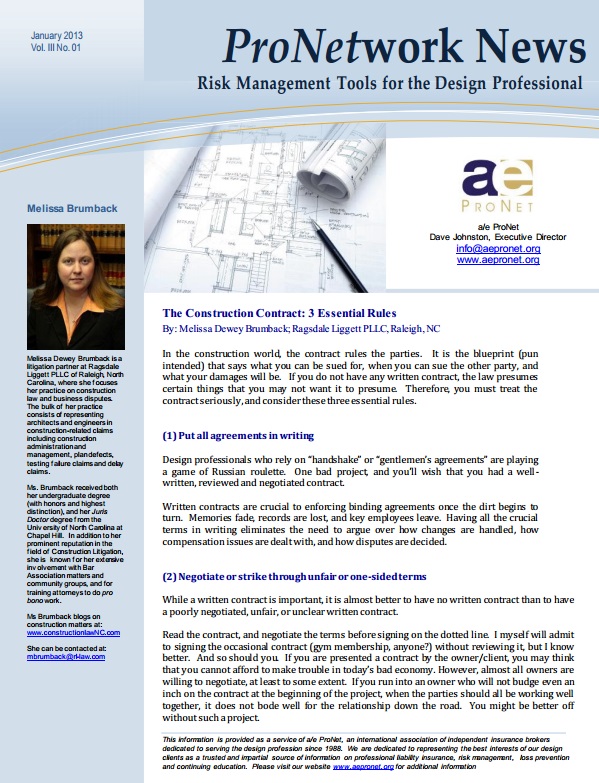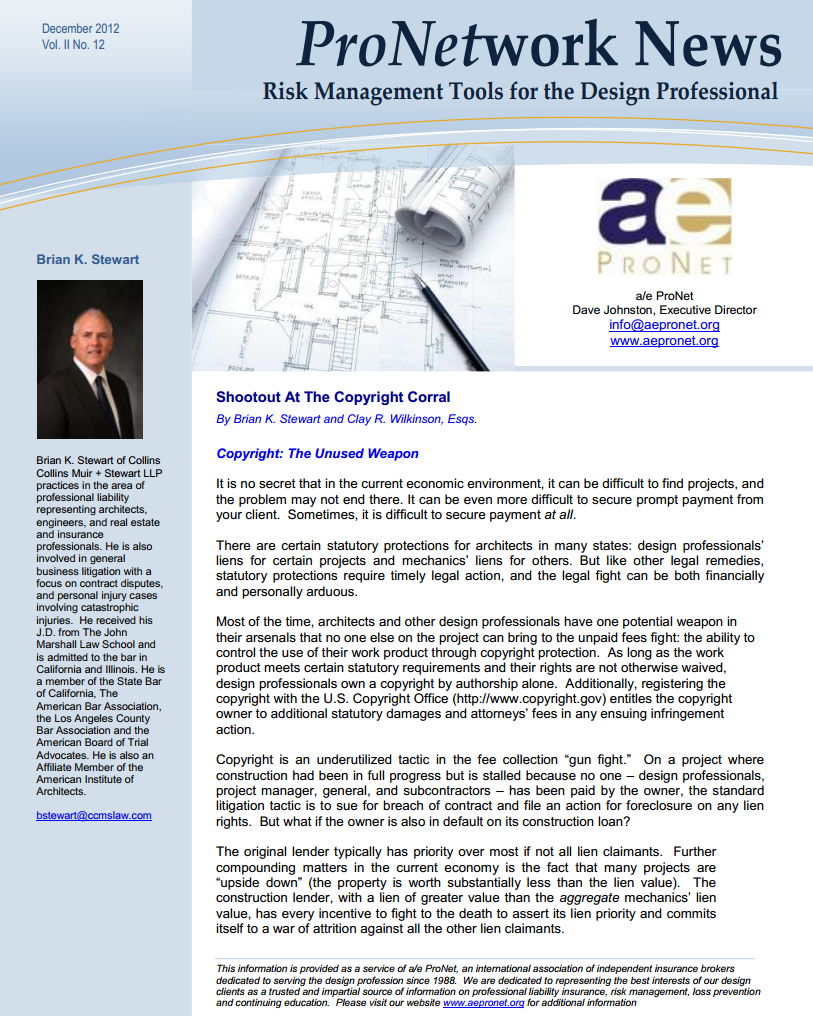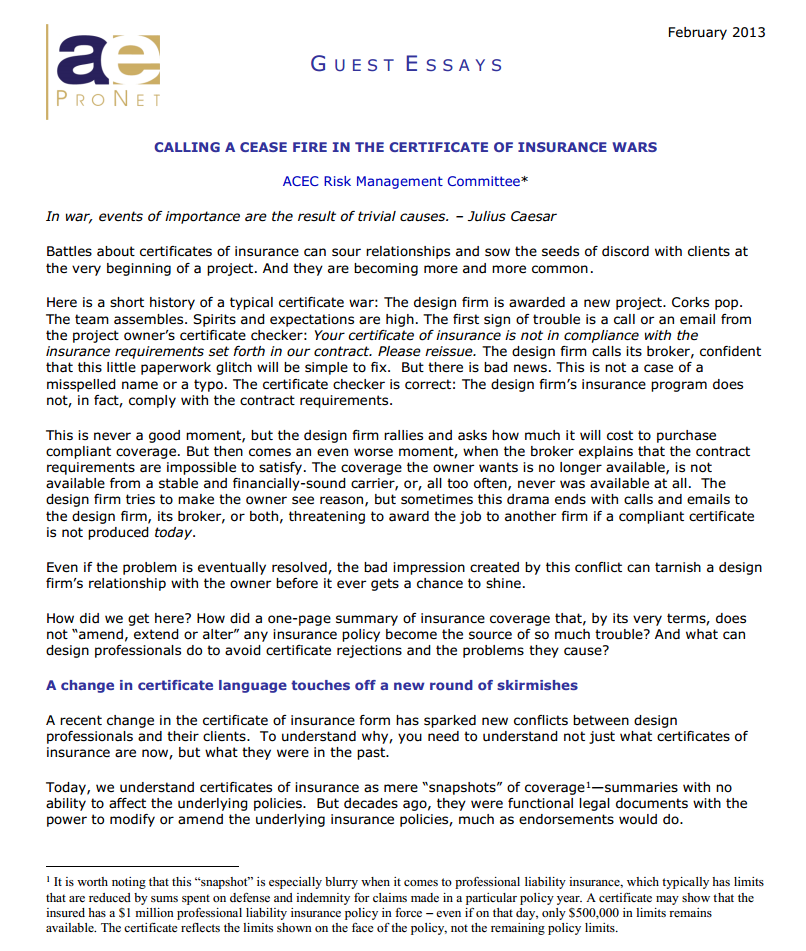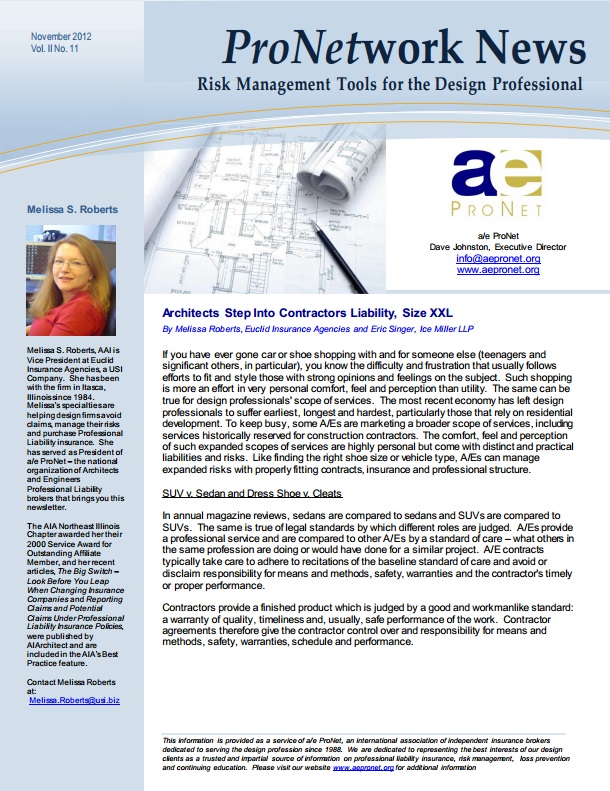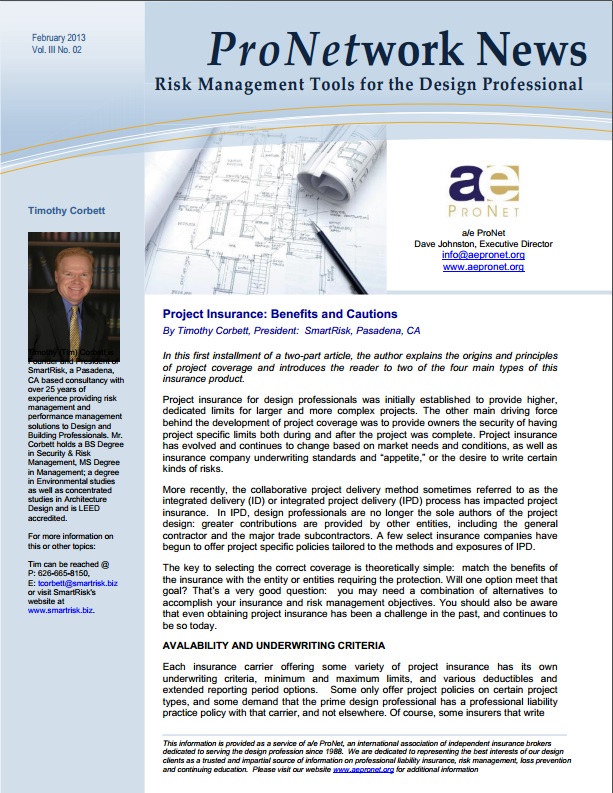 The February 2013 issue of ProNetwork News is the first installment of a two-part article; the author, Tim Corbett of SmartRisk explains the origins and principles of project coverage and introduces the reader to two of the four main types of Project Insurance.
The February 2013 issue of ProNetwork News is the first installment of a two-part article; the author, Tim Corbett of SmartRisk explains the origins and principles of project coverage and introduces the reader to two of the four main types of Project Insurance.
Project insurance for design professionals was initially established to provide higher, dedicated limits for larger and more complex projects. The other main driving force behind the development of project coverage was to provide owners the security of having project specific limits both during and after the project was complete. Project insurance has evolved and continues to change based on market needs and conditions, as well as insurance company underwriting standards and “appetite,” or the desire to write certain kinds of risks.
More recently, the collaborative project delivery method sometimes referred to as the integrated delivery (ID) or integrated project delivery (IPD) process has impacted project insurance. In IPD, design professionals are no longer the sole authors of the project design: greater contributions are provided by other entities, including the general contractor and the major trade subcontractors. A few select insurance companies have begun to offer project specific policies tailored to the methods and exposures of IPD.
The key to selecting the correct coverage is theoretically simple: match the benefits of the insurance with the entity or entities requiring the protection. Will one option meet that goal? That’s a very good question: you may need a combination of alternatives to accomplish your insurance and risk management objectives. You should also be aware that even obtaining project insurance has been a challenge in the past, and continues to be so today. Continue reading “Project Insurance: Benefits and Cautions – Part 1 of 2”




